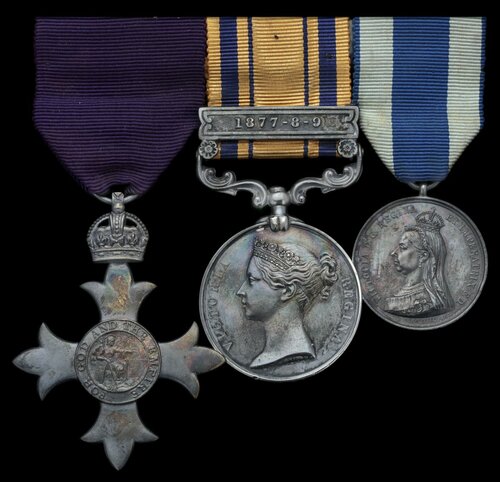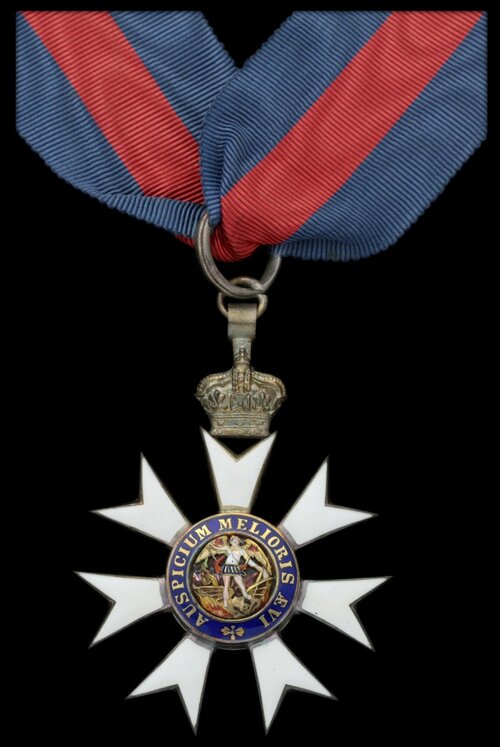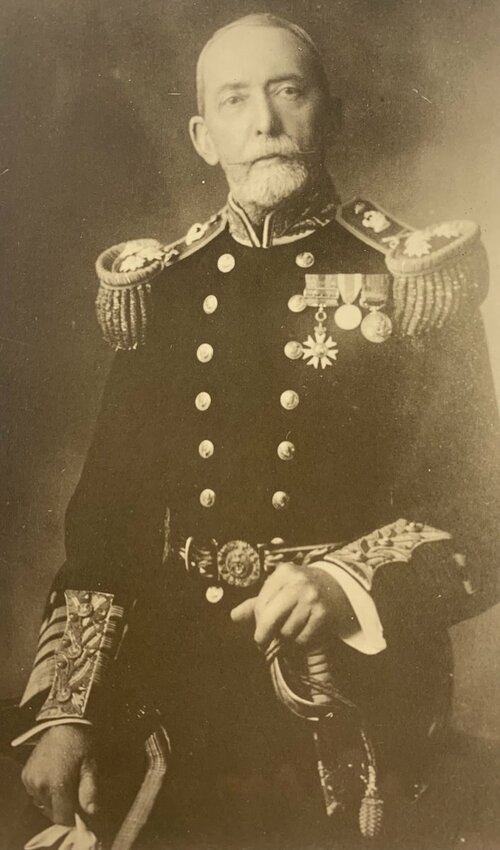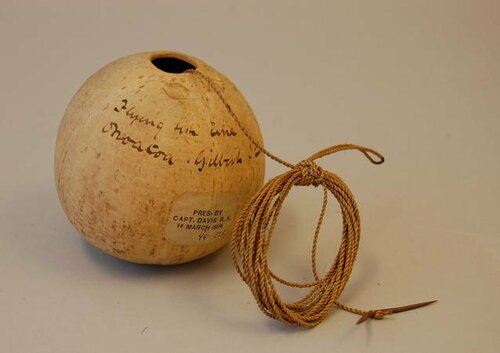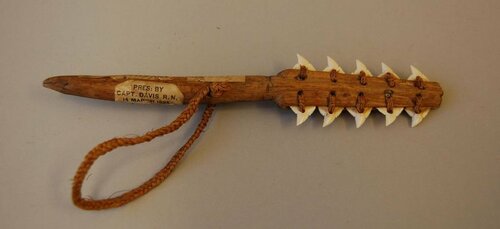Auction: 21003 - Orders, Decorations and Medals
Lot: 472
Sold by Order of a Direct Descendant
The remarkable C.M.G., O.B.E. group of four awarded to Admiral E. H. M. Davis, Royal Navy, who first saw action as a teenager in the Anglo-Satsuma War and Choshu Rebellion, before seeing action ashore with the Naval Brigade during the Zulu War; he latterly raised the British flag on no less than thirteen islands in the Western Pacific and secured important ethnographical collections for our Museums whilst in command of the Royal Sovereign in that region
The Most Distinguished Order of St. Michael and St. George, C.M.G., neck Badge, silver-gilt and enamel, converted from a neck Badge, in its R. & S. Garrard & Co. case of issue, with full neck riband with fittings as worn; The Most Excellent Order of the British Empire, O.B.E. (Civil) Officer’s 1st Type breast Badge, silver-gilt; South Africa 1877-79, 1 clasp, 1877-8-9 (Commr. E. H. M. Davis, R.N. H.M.S. "Active" & "Boadicea"); Jubilee 1897, last three mounted as worn by Spink & Son, 17-18 Piccadilly, good very fine (4)
C.M.G. London Gazette 2 January 1894:
'For services connected with certain Islands in the Western Pacific.'
O.B.E. London Gazette 30 March 1920:
'Organiser, Bexhill-on-Sea Transport and Ambulance Column.'
Edward Henry Meggs Davis was born on 18 August 1846 and entered the Royal Navy in 1860. He first saw action during the Anglo-Satsuma War, being at the Bombardment of Kagosima in 1863 and the Storming and Capture of the Forts at Simonoseki the following year. In that first action, from 15-17 August 1863, a British fleet of 7 vessels under Sir Augustus Kuper sailed and bombarded the city in reply to the Namamugi Incident of 1862. After two days, the British withdrew but the Japanese eventually paid compensation.
Having served ashore with the Naval Brigade during the Zulu War, including Transport Duties and being promoted Commander 14 August 1878, he had the rare accolade of having served with two vessels during the period, borne out in the unusual naming upon his Medal.
In command of Daring, he transferred to Wivern on 19 March 1885 and impressed Admiral Dowell for his skills in photography during that period. He took command of Royal Sovereign and undertook the following expeditions in the Western Pacific, taking 13 islands into British possession:
'Vanuatu and New Caledonia - 10 December 1889-18 June 1891.
(Papua) New Guinea and Solomon Islands - 18 June 1891-9 April 1892.
Kiribati, Marshall Islands and Tuvalu - 14 April 1892-30 August 1892.'
Whilst on the Ellice Islands he met Martin Kleis and besides secured some important collections. Today 141 artefacts from his expeditions are held by the British Museum, presented from the Christy and Gerrard Collections.
In September 1891, Bluejackets from Royalist landed and punished a village of the Kalikoqu tribe of in the Roviana Lagoon, on the southern side of New Georgia in the Solomon Islands, following the murder of a trader; the sailors shot some of the men who were believed to be the leaders, set fire to the village and destroyed canoes. Davis also penned the important work The proceedings of H.M.S. "Royalist", May-August, 1892, in the Gilbert, Ellice and Marshall Islands.
Having been duly presented with his C.M.G., Davis went onto join the Legislative Council of Jamaica in 1900 and was promoted Rear-Admiral on 13 March 1907, made Admiral on retirement on 5 November 1908. He served at home in a civil capacity in Bexhill during the Great War (no Medals), earning an O.B.E. and was a member of the Royal Yacht Squadron, Cowes. A Nautical Assessor of some repute, Davis died as a result of an accidental fall from a window he was trying to repair at home on 6 October 1929; sold together with copied research and a portrait photo of the Admiral wearing his Medals.
Subject to 20% VAT on Buyer’s Premium. For more information please view Terms and Conditions for Buyers.
Sold for
£6,000
Starting price
£1900

